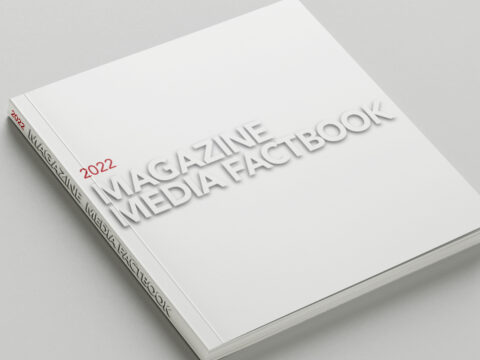The Power of Magazines: Engagement
The 2020 Magazine Media Factbook – the annual go-to source for trends in the print industry -- hit the virtual presses this week. As a regular contributor to the Factbook, we at MRI-Simmons wait eagerly for its release every year, and this year’s edition offers nearly 100 pages of content covering industry statistics and insights on seven key themes: cross-platform audiences, readership and engagement, demographics, social media, category trends, and special spotlights on affluent consumers and magazines in the era of COVID-19.
This blog series will cover small snapshots on some of these findings; if you’re looking to go even more in depth, you can download the Factbook in full and get in touch with us for customized looks at these and many other magazine-related metrics that we track year-round.
At a macro level, magazines are still thriving in a media environment that continues to reinvent itself. According to MediaRadar, in 2019, magazines produced over 96,000 pages of editorial across 22 categories. This medium offers something for everyone – literally. As the industry currency for magazines, MRI-Simmons covers not only what audiences are reading, but who and why. On the “who” front, 91% of US adults read a print or digital magazine in the last six months, as did 95% of adults under the age of 25. Furthermore, magazine audiences are diverse, reaching 91% of African-American consumers, 91% of Asian-Americans, 86% of Latinx consumers, and 93% of the LGBT adult population.
These numbers speak to the power of magazines to connect to audiences across demographics and interest areas. MRI-Simmons’ Multi-Media Engagement Study puts a finer point on this notion with a number of attitudinal dimensions. Most importantly, magazine readers notice and act on ads. Thirty-six percent of readers say they pay attention to or notice ads in magazines; 35% say magazines have ads they care about; and nearly one-third say magazine ads help them make purchase decisions. The same cannot be said for websites and TV network audiences, who are at or below the average for these measures.
Yet why magazines garner above average ad receptivity relates to the emotional connection readers have as well as perceived trustworthiness of this medium. Compared with audiences across magazines, websites and TV, readers are 1.3x times more likely to agree that magazines touch them deeply and inspire them in their own lives. And almost half of readers say reading a magazine is a treat and something they use to kick back and relax (both measures are 1.2x higher among magazine readers than the base of all audiences).
As for trust, an impressive 58% of readers say they trust magazines tell the truth; 56% say they don’t worry about accuracy, and an even 50% feel that their magazines do not sensationalize content. Each of these measures are 1.2x higher than the average and at least 8 percentage points higher than websites and TV.
The ease and highly positive state of mind that readers find themselves in when they pick up or log on to a magazine primes them to be open to learning about new products (48%) or trying new things (41%) as a result of what they experience through the printed (or virtually printed) page.
No doubt the media landscape is in a state of flux due to new ways to target audiences and new realities on how consumers spend their time across media. In the midst of this change, magazines continue to have a role to play in reaching targeted, engaged audiences.
To learn more about the power of magazines, download the 2020 Magazine Media Factbook.


